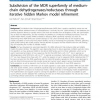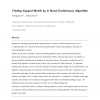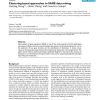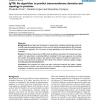932 search results - page 96 / 187 » Sequence Complexity for Biological Sequence Analysis |
BMCBI
2010
13 years 9 months ago
2010
Background: The Medium-chain Dehydrogenases/Reductases (MDR) form a protein superfamily whose size and complexity defeats traditional means of subclassification; it currently has ...
EVOW
2010
Springer
13 years 7 months ago
2010
Springer
Background: Identifying approximately repeated patterns, or motifs, in DNA sequences from a set of co-regulated genes is an important step towards deciphering the complex gene reg...
BIODATAMINING
2008
13 years 9 months ago
2008
Serial analysis of gene expression (SAGE) is one of the most powerful tools for global gene expression profiling. It has led to several biological discoveries and biomedical appli...
BMCBI
2008
13 years 9 months ago
2008
Background: Due to their role of receptors or transporters, membrane proteins play a key role in many important biological functions. In our work we used Grammatical Inference (GI...
BMCBI
2004
13 years 9 months ago
2004
Background: Hidden Markov Models (HMMs) have proven very useful in computational biology for such applications as sequence pattern matching, gene-finding, and structure prediction...




